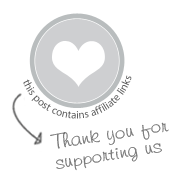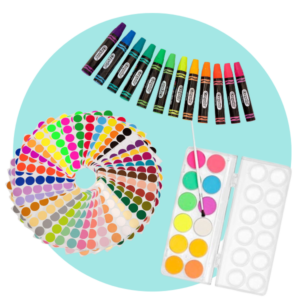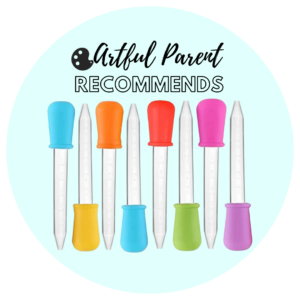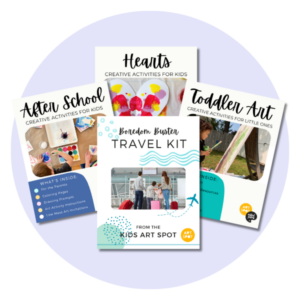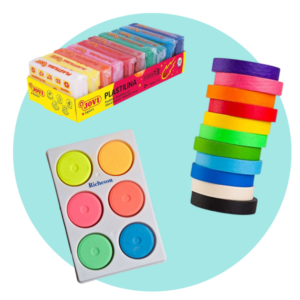I was standing at the farmers’ market last Saturday, juggling a bag of apples and trying to keep Milo from climbing out of his stroller, when a woman I’d never met before struck up a conversation.
Within five minutes, she was telling me about her recent divorce and asking for parenting advice. Matt later asked how I knew her—I didn’t. But somehow, she’d felt comfortable enough to open up.
It got me thinking about trust and how some people just seem to radiate it. You meet them and within minutes, you feel like you can tell them anything. Meanwhile, others leave you feeling guarded even after multiple interactions.
As someone who spent seven years teaching kindergarten before transitioning to writing, I’ve learned a lot about building quick connections—with kids, with parents, with other teachers.
And now, juggling Ellie’s endless questions and Milo’s constant need for reassurance, I’m reminded daily that trust isn’t just something that happens over time. Sometimes it’s built in moments.
So what makes someone instantly trustworthy? Turns out, psychology has some pretty clear answers.
1) You make genuine eye contact without staring
There’s a sweet spot with eye contact, and I’ll admit I didn’t always know where it was. When I first started teaching, I’d either avoid looking at parents during conferences (awkward) or hold eye contact so intensely they’d shift in their seats (also awkward).
The magic happens somewhere in between. When you look at someone while they’re talking—really look at them—you’re communicating that they matter. But if you never break that gaze, it starts to feel intense or even aggressive.
I practice this now during my monthly craft playdates. When another parent is sharing something, I look at them, nod, glance away briefly, then return my attention. It’s natural. It’s comfortable.
Research on nonverbal communication shows that appropriate eye contact increases perceptions of trustworthiness and competence. But “appropriate” is the key word. Cultural norms vary, and individual comfort levels differ.
The goal isn’t to perform eye contact perfectly. It’s to be present enough that the other person feels seen.
2) You mirror their body language subtly
This one surprised me when I first learned about it, but now I notice it everywhere. When you’re talking to someone you trust, you naturally start to mirror their posture, their gestures, even their breathing rhythm.
And it works in reverse too. When you subtly match someone’s body language, they unconsciously feel more connected to you.
I’m not talking about obvious mimicry—that’s creepy. But if someone leans in, you might lean in slightly too. If they cross their arms in a relaxed way, you might do the same. It’s about creating a sense of “we’re on the same wavelength.”
I see this with Ellie and her friends during playdates. When one child sits cross-legged to work on a puzzle, the others naturally arrange themselves the same way. There’s comfort in similarity.
Just keep it natural. Force it, and you’ll break trust instead of building it.
3) You share something vulnerable first
Want to know the fastest way to make someone feel safe with you? Show them you’re human.
- People who always look put together without trying usually display these 9 traits, says psychology - Global English Editing
- If you have lived through these hardships you are stronger than most others - Global English Editing
- You know it’s time for a gentle reset when retirement feels more empty than enriching - Global English Editing
As Brené Brown has noted, “Vulnerability is the birthplace of connection and the path to the feeling of worthiness.”
This doesn’t mean oversharing or dumping your problems on strangers. But it does mean being willing to go first with honesty.
When I meet someone new at the community garden where we volunteer, I might mention that I let my kids have screen time on hard days, or that I burned dinner last night and we ate scrambled eggs instead.
These small admissions signal that I’m not pretending to have it all together. And when you show your own imperfections, others feel permission to be imperfect too.
Since working through my own struggles with anxiety and perfectionism, I’ve gotten better at this. The irony is that trying to appear flawless actually makes people trust you less. They can sense something’s off when someone presents a perfect facade.
4) You ask follow-up questions and actually listen
Here’s something I learned from years of practicing “tell me more” with my kids: most people aren’t really listening. They’re waiting for their turn to talk.
Trustworthy people do something different. They ask a question, hear the answer, and then ask something deeper based on what they just heard.
If someone mentions they’re tired, instead of launching into your own exhaustion story, you might ask, “What’s been keeping you up?” or “How long has that been going on?”
This isn’t interrogation. It’s genuine curiosity about another person’s experience. And it’s rare enough that when someone does it, we notice. We feel valued.
I practice this constantly with Ellie, who’s at that age where every conversation could branch into seventeen different directions. When she tells me about her day, I try to dig deeper: “What made that fun?” “How did that make you feel?” “What happened next?”
The same approach works with adults. People open up when they realize you’re actually interested.
5) You validate feelings without immediately offering solutions
This one’s hard, especially if you’re a fixer like me. Someone shares a problem, and your brain immediately starts generating solutions. But jumping straight to advice can actually shut down trust.
What builds connection is acknowledging what someone feels before trying to solve anything. “That sounds really frustrating” or “I can see why you’d be worried” goes a lot further than “Here’s what you should do.”
I’m still working on this with Matt. When he comes home stressed about a job site issue, my instinct is to problem-solve. But what he usually needs first is just to feel heard.
The same applies when meeting someone new. If they share something challenging, resist the urge to fix it right away. Just acknowledge their experience. Solutions can come later, once trust is established.
6) You smile with your whole face, especially your eyes
There’s a difference between a real smile and a polite one, and people can tell.
A genuine smile—what researchers call a Duchenne smile—involves not just your mouth but your eyes. Those little crinkles at the corners signal authentic warmth and approachability.
When I’m at the library for monthly story time, I can see kids gravitating toward the volunteers who smile for real versus those who are just going through the motions. Children are brilliant at detecting authenticity.
Adults aren’t much different. We respond to genuine warmth because it signals safety. A real smile says “I’m happy you’re here” in a way that words sometimes can’t.
This doesn’t mean forcing yourself to smile constantly—that’s exhausting and fake. But when something genuinely amuses or pleases you, let your face show it. That authenticity is magnetic.
7) You admit when you don’t know something
Nothing destroys trust faster than pretending to know something you don’t. And nothing builds it faster than honest acknowledgment of your limits.
“I don’t know, but I’d like to learn more about that” or “That’s not my area of expertise” are powerful phrases. They demonstrate humility and honesty—two cornerstones of trustworthiness.
In my writing work, I’ve learned to say “I’m not sure about that” rather than bluffing my way through. People respect honest uncertainty far more than fake confidence.
I’m teaching this to Ellie too. When she asks me something I don’t know—and at five, she asks approximately eight thousand questions daily—I say “That’s a great question. Let’s find out together.” It models that not knowing is okay.
The same principle applies when meeting new people. Admitting gaps in your knowledge makes you more relatable, not less credible.
8) You honor your commitments, even small ones
Trust is built in marble-sized moments. If you say you’ll send someone a recipe, and you actually do it, you’ve just deposited trust in the relationship bank. If you say you’ll be somewhere at a certain time and you show up, you’re demonstrating reliability.
Behavioral consistency is one of the strongest predictors of trust. People watch what you do far more than what you say.
This is something I learned from Matt, honestly. He’s the kind of person who does what he says he’ll do, whether it’s Saturday pancake duty or fixing that squeaky door hinge. His consistency makes him deeply trustworthy.
In those first few minutes of meeting someone, you might not have a chance to prove long-term reliability. But you can still honor small commitments. If you say you’ll grab someone’s contact info, do it before you leave. If you offer to share a resource, follow through that same day.
These tiny actions signal that your word means something.
Final thoughts
Building trust quickly isn’t about manipulation or performing a role. It’s about showing up as your genuine self while making space for others to do the same.
I’m still learning this balance. Some days I nail it at the farmers’ market, easily chatting with vendors I’ve known for years. Other days I’m so frazzled from Milo’s latest tantrum that I can barely make eye contact with anyone.
And that’s okay. The beauty of these trust-building behaviors is that they’re not all-or-nothing. Even implementing one or two can shift how people experience you.
What I’ve noticed, both in my teaching days and now in the messy middle of parenting small kids, is that people are desperate for genuine connection. When you offer even a glimpse of authentic presence—when you really see them, listen to them, and show up honestly—they respond.
Trust isn’t just built over years. Sometimes it’s built in moments. In the space of a real smile, a thoughtful question, or an honest admission. In the decision to be present rather than perfect.
So next time you meet someone new, try leading with curiosity instead of impression management. Ask real questions. Share something true. Let your face show what you actually feel.
You might be surprised how quickly trust can grow when you give it room to breathe.




